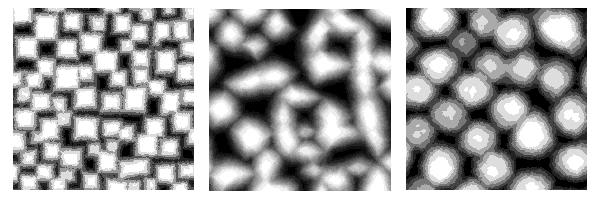
Epitaxial Thin-Film Growth
Molecular beam epitaxy (MBE) is of great technological and practical interest due to the use of MBE to make semiconductors, quantum wells, solid-state lasers, as well as a variety of other nanostructures such as quantum wires and quantum dots. One of the main advantages of MBE is the ability to control the deposition of thin-films and atomic structures on the atomic scale in order to create nanostructures.
Recently, it has been shown, that even in the absence of effects such as strain, homoepitaxial growth of thin-films may lead to an instability known as "mound formation". The origin of this instability is "diffusion bias" which may be caused by several effects. These include an Ehrlich-Schwoebel barrier to adatom diffusion over steps as well as short-range step-adatom attraction and even edge- and corner- diffusion.
Current research includes the study of these different mechanisms of mound formation and their effects on the mound morphology and coarsening on metal (100) and (111) surfaces. Another important question involves the suppression of the mound instability, and the development of a theory for the crossover time and length from a flat to "rough" as a function of deposition parameters such as temperature, deposition rate, surface symmetry etc.

Kinetic Monte Carlo simulations of mounds formed after 100 ML have been deposited - observed mound morphology depends on mechanisms of island-relaxation, including edge-diffusion (left picture), edge-and-corner-diffusion (middle picture) and single-bond detachment (right picture).